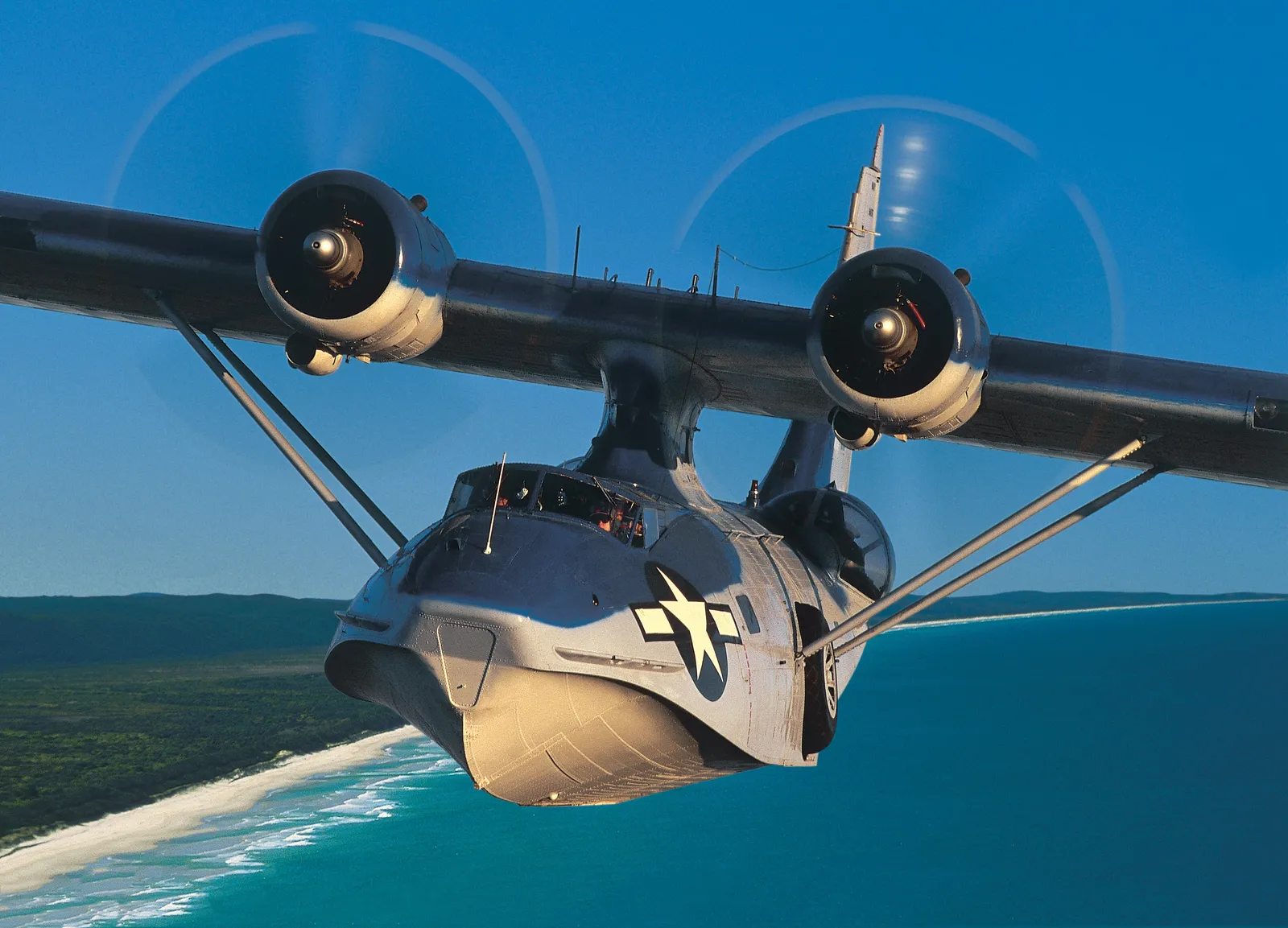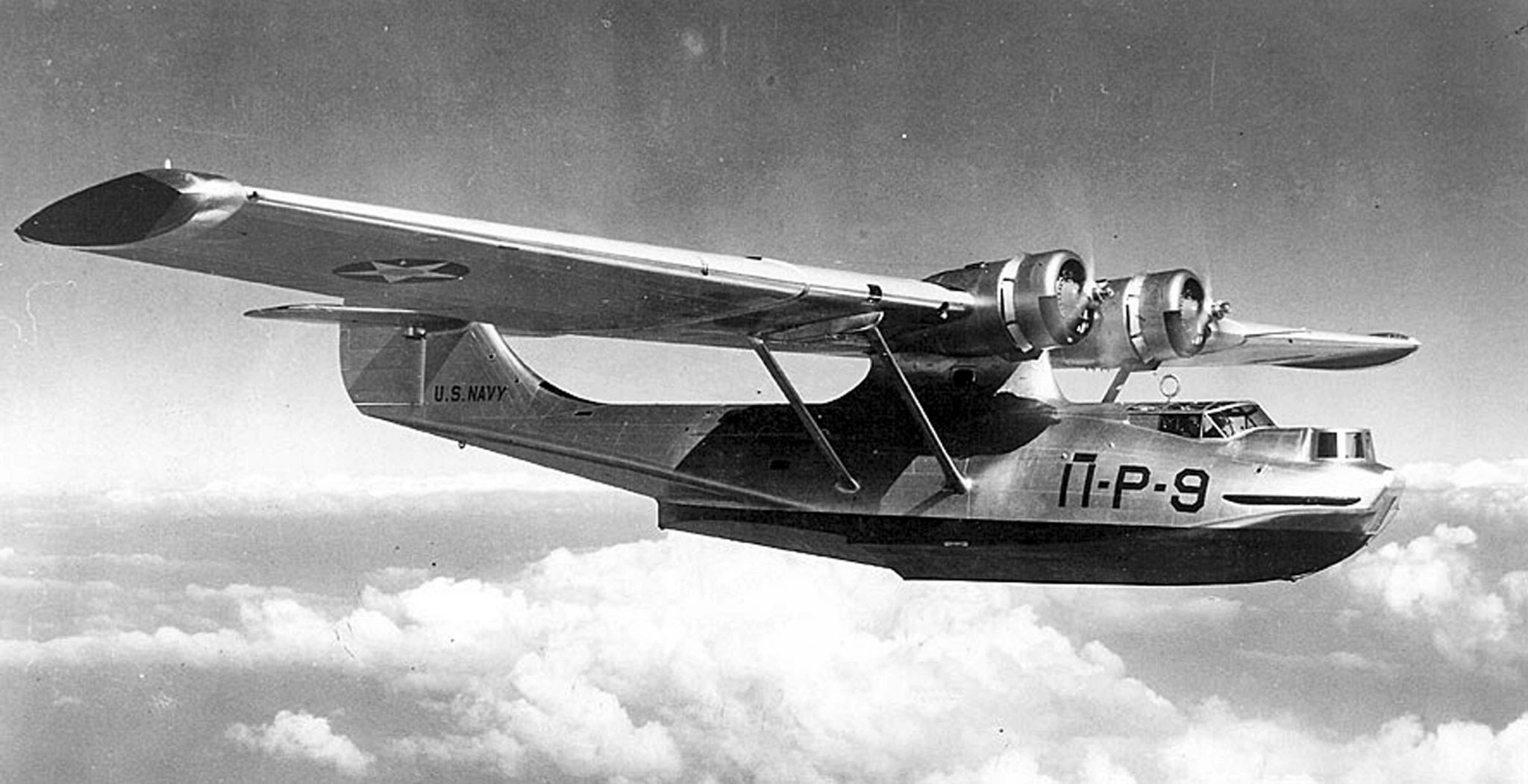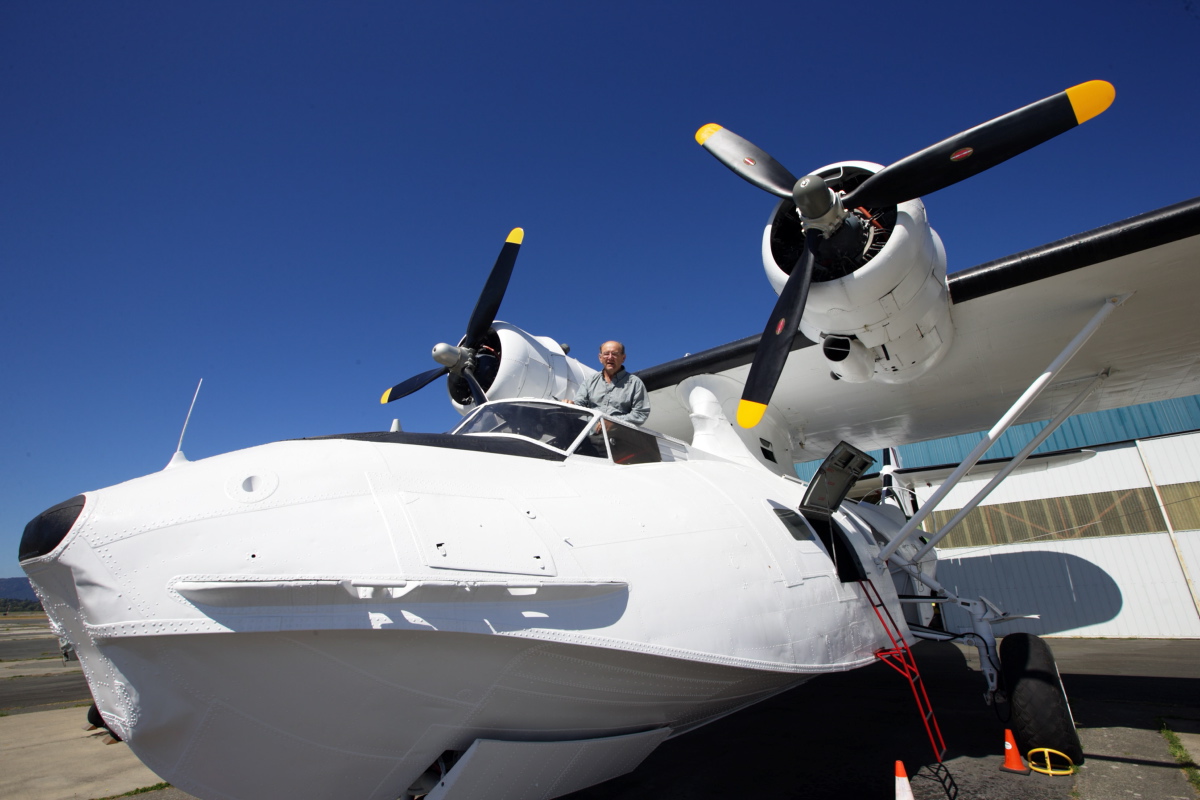Pby Aircraft - This article provides a list of references for generations, but there aren't enough proper citations. Please help improve this article by including more accurate citations. (November 2021) (Learn how and what to remove this template message)
The Consolidated PBY Catalina is a flying boat and amphibious aircraft manufactured in the 1930s and 1940s. In Canadian service he was known as the Canso. It was one of the most used seaplanes in World War II. Catalinas have served in all branches of the United States Armed Forces and in the Air Forces and Navies of many other nations. The last military PBYs served until the 1980s. As of 2021, 86 years after its maiden flight, the aircraft continues to fly as a depth bomber (or aircraft tanker) on firefighting missions in some parts of the world. Nobody stays in military service.
Pby Aircraft

The PBY was originally conceived as a patrol bomber, a long-range aircraft designed to locate and attack transport ships at sea in order to disrupt enemy supply lines. Faced with potential conflicts in the Pacific Ocean, where troops would need long-distance resupply, the US Navy invested millions of dollars in the 1930s in the development of long-range flying boats for this purpose. Flying boats had the advantage of not needing runways and effectively having the ocean at their disposal.
Catalina Pby 5 Red Pelican Civil Security F Zbar
As American dominance in the Pacific faced competition from Japan in the 1930s, the US Navy commissioned Consolidated, Martin and Douglas in October 1933 to build competing prototype patrol flying boats.
Naval doctrine of the 1930s and 1940s used flying boats in a variety of roles that are now being filled by more specialized aircraft. The US Navy adopted the Consolidated P2Y and Martin P3M models for this role in 1931, but both aircraft were underpowered and hampered by insufficient range and limited payload.
Consolidated and Douglas each delivered individual prototypes of their new XP3Y-1 and XP3D-1 designs. Consolidated's XP3Y-1 was an evolution of the XPY-1 design that originally competed unsuccessfully for the P3M contract two years earlier and the XP2Y design that the Navy approved for limited production. Although the Douglas aircraft was a good design, the Navy chose the Consolidated because the projected cost was only $90,000 per aircraft.
The Consolidated (Company Model 28) XP3Y-1 design had a parasol wing with external struts mounted on a pylon above the fuselage. Wingtip stabilization floats were retracted in flight to form streamlined wingtips and were approved by the Saunders-Roe Company. The two-tier fuselage design was similar to that of the P2Y, but the Model 28 had a cantilevered, cruciform tail section instead of a twin-strut tail. Cleaner aerodynamics gave the Model 28 better performance than previous designs. The construction is all metal, skin-hugging, made of aluminum sheeting, except for the rails and the trailing edge of the wings, which are covered with fabric.
Pby Images, Stock Photos & Vectors
The prototype was powered by two 825 hp (615 kW) Pratt & Whitney R-1830-54 Twin Wasp radials mounted on the leading edge of the wing. Armamt contained four .30 inch (7.6 mm) Browning AN/M2 machine guns and bombs weighing up to 910 kg.
After that it was handed over to the US Navy for service trials. The XP3Y-1 was a significant performance upgrade over previous patrol flying boats. The Navy requested further development to bring the aircraft into the patrol bomber category, and in October 1935 the prototype was returned to Consolidated for further work, including the installation of 900 hp (670 kW) R-1830-64 Giants. For the redesigned XPBY-1, Consolidated introduced redesigned vertical empennage surfaces that solved the problem of empennage dip on takeoff, which made takeoff impossible in certain conditions. XPBY-1 made its maiden flight on May 19, 1936, achieving a record non-stop flight of 3,443 miles (2,992 nautical miles; 5,541 km).
The XPBY-1 was delivered to VP-11F in October 1936. The second squadron equipped was VP-12, which received the first of its aircraft in early 1937. The second production order was placed on July 25, 1936. In the following three years, the design was successively developed and subsequent models were introduced.

The aircraft was eventually named Catalina after Santa Catalina Island, California. The name was coined in November 1941 when Britain ordered its first 30 aircraft.
Pby 5a Catalina \
The Naval Aircraft Factory made significant changes to the PBY design, many of which would have significantly disrupted deliveries if incorporated into the consolidated production lines.
The new aircraft, officially known as the PBN-1 Nomad, had several differences from the base PBY. The most obvious improvements were to the bow, which was sharpened and lengthened by two feet, and the stern, which was tall and had a new shape. Other improvements included larger fuel tanks, a 50% increase in range, and stronger wings that allowed for a 908 kg (2,000 lb) increase in gross takeoff weight. An auxiliary power unit was installed along with an improved electrical system, and the gun was upgraded with continuous power mechanisms.
138 of the 156 PBN-1s produced served with the Soviet Navy after the NAF transferred ownership through the ZEBRA project (1944-1945).
The remaining 18 were assigned to training units at NAS Whidbey Island and the Naval Air Station in Newport, Rhode Island.
File:consolidated Pby 5a Catalina '48294' (n9521c) (49441482507).jpg
The designation "PBY" was designated in accordance with the US Navy's 1922 aircraft designation system; PB stands for "Patrol Bomber" and Y is the code assigned to Consolidated Aircraft as the manufacturer. Catalinas built by other manufacturers for the US Navy were referred to under different manufacturer codes such that Canadian Vickers examples were referred to as PBV, Boeing Canada examples as PB2B (Boeing PBB already exists) and Naval Aircraft Factory examples as PBN . In keeping with contemporary British naming practice of naming seaplanes after coastal port cities, the Royal Canadian Air Force examples were named Canso after the Nova Scotia town of the same name.
The United States Air Force and later the United States Air Force used the OA-10 designation. US Navy Catalinas used in the Pacific against the Japanese for night operations were painted black overall. As a result, these aircraft were sometimes referred to locally as "Black Cats".
During World War II, PBYs were used in anti-submarine warfare, patrol bombing, convoy escort, search and rescue missions (particularly air and sea rescue) and cargo transport.

The type has been in use in almost all areas of operation since the Second World War. Catalina served with distinction and played a prominent and invaluable role in the war against Japan.
Pby 5a Catalina Model 1/72
These patrol aircraft shared combat roles with land-based patrol bombers, while the very long-range Consolidated LB-30 and Consolidated Coronado were deployed to augment the all-important strategic airlift logistics capability in the vast Pacific theater of war. The pairing allowed Catalina to fill the role of eyes of the fleet at longer ranges as seaplane scouts.
Several different flying boats were adopted by the Navy, but the PBY was the most widely used and produced.
Though slow and clumsy, Allied forces used the Catalins in a variety of roles the aircraft was never intended for. PBYs are known for their rescue role, saving the lives of hundreds of aircrew who crashed over water. Catalina Airlines called their aircraft "Cat" in combat missions and "Dumbo" in air and sea rescue services.
The Catalina achieved the first credited air-to-air "kill" of a Japanese aircraft by the US Navy in the Pacific War. On December 10, 1941, the Japanese attacked the Cavite Navy Yard in the Philippines. Numerous American ships and submarines were damaged or destroyed by bombs and shrapnel. While flying to safety during the Cavite raid, Lt. Harmon T.'s PBY Utter was attacked by three Japanese Mitsubishi A6M2 Type 0 carrier fighters. Chief Boatswain Earl D. Utter later served as commander, coordinating airstrikes on the carrier that resulted in the destruction of the Japanese battleship Yamato.
Pby Catalina Flying Boat Stock Photo
Catalina conducted one of the first United States offensive operations against the Japanese. On December 27, 1941, six Catalinas of Patrol Squadron 101 bombed a Japanese ship at Jolo Island against heavy combat resistance, losing four Catalinas.
Catalinas were the most widely deployed anti-submarine (ASW) aircraft in both the Atlantic and Pacific of World War II, and were also used in the Indian Ocean from the Seychelles and Ceylon. Her duties included escorting convoys to Murmansk. By 1943 U-boats were well armed with anti-aircraft guns and two Victoria Crosses were won by Catalina pilots who stepped up their attacks on U-boats in the face of heavy fire: Flying Officer John Cruikshank of the RAF in 1944. on the sinking of U-347 (although it is now known that the U-boat was U-361
) and in the same year Flight Lieutenant David Hornell of the Royal Canadian Air Force (posthumously) against U-1225. The Catalinas destroyed 40 submarines, but not without losses of their own. Brazilian Catalina attacked and sank U-199 in Brazilian waters on 31 July 1943. The aircraft was later named "Arara" in memory of the merchant ship

Pby catalina model kit, pby catalina model, 1 48 pby catalina, pby, pby catalina for sale, pby catalina rc, dynam pby catalina, pby catalina rc plane, pby for sale, pby catalina aircraft, pby seaplane, pby aircraft sale
Post A Comment:
0 comments so far,add yours